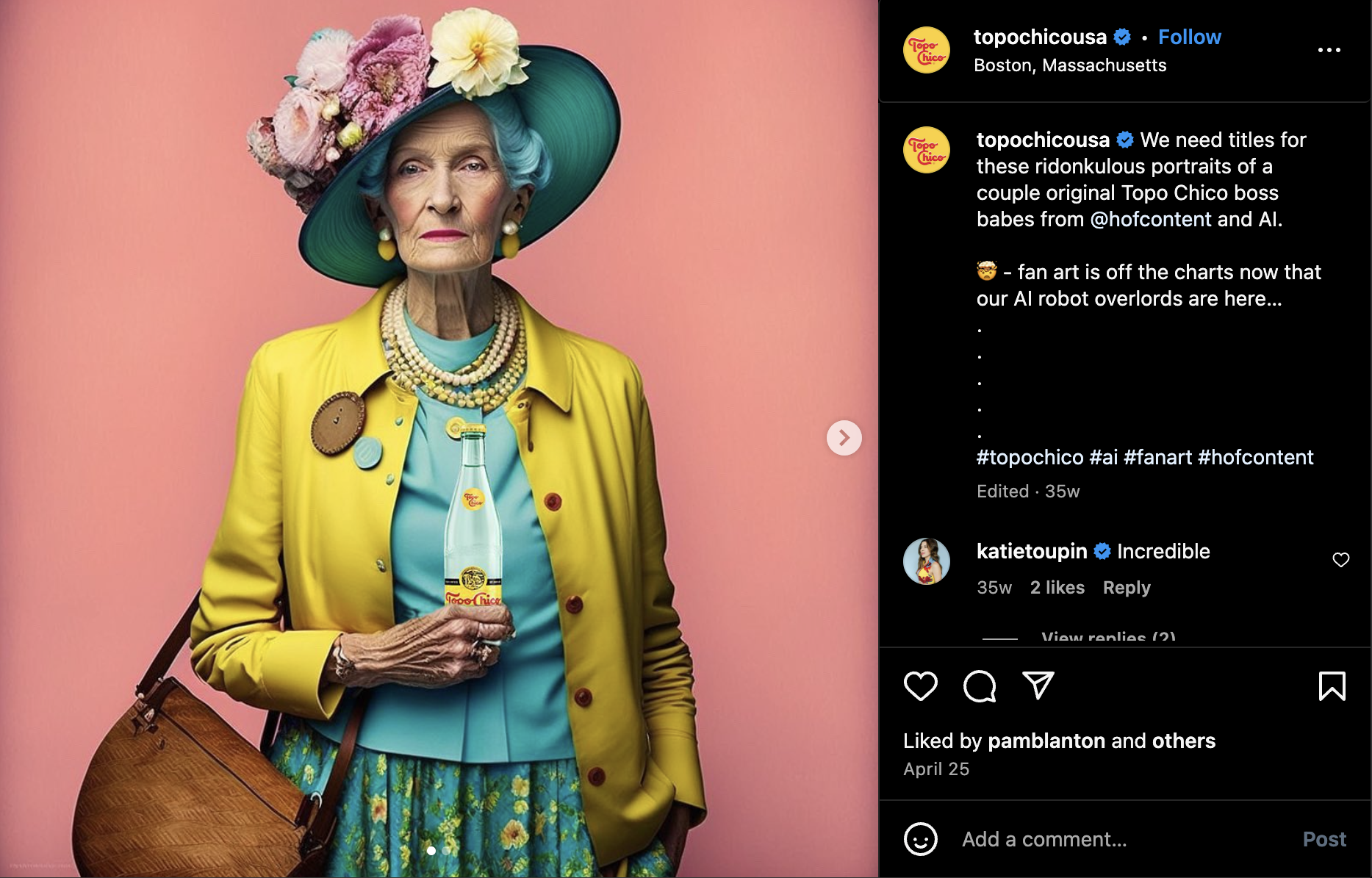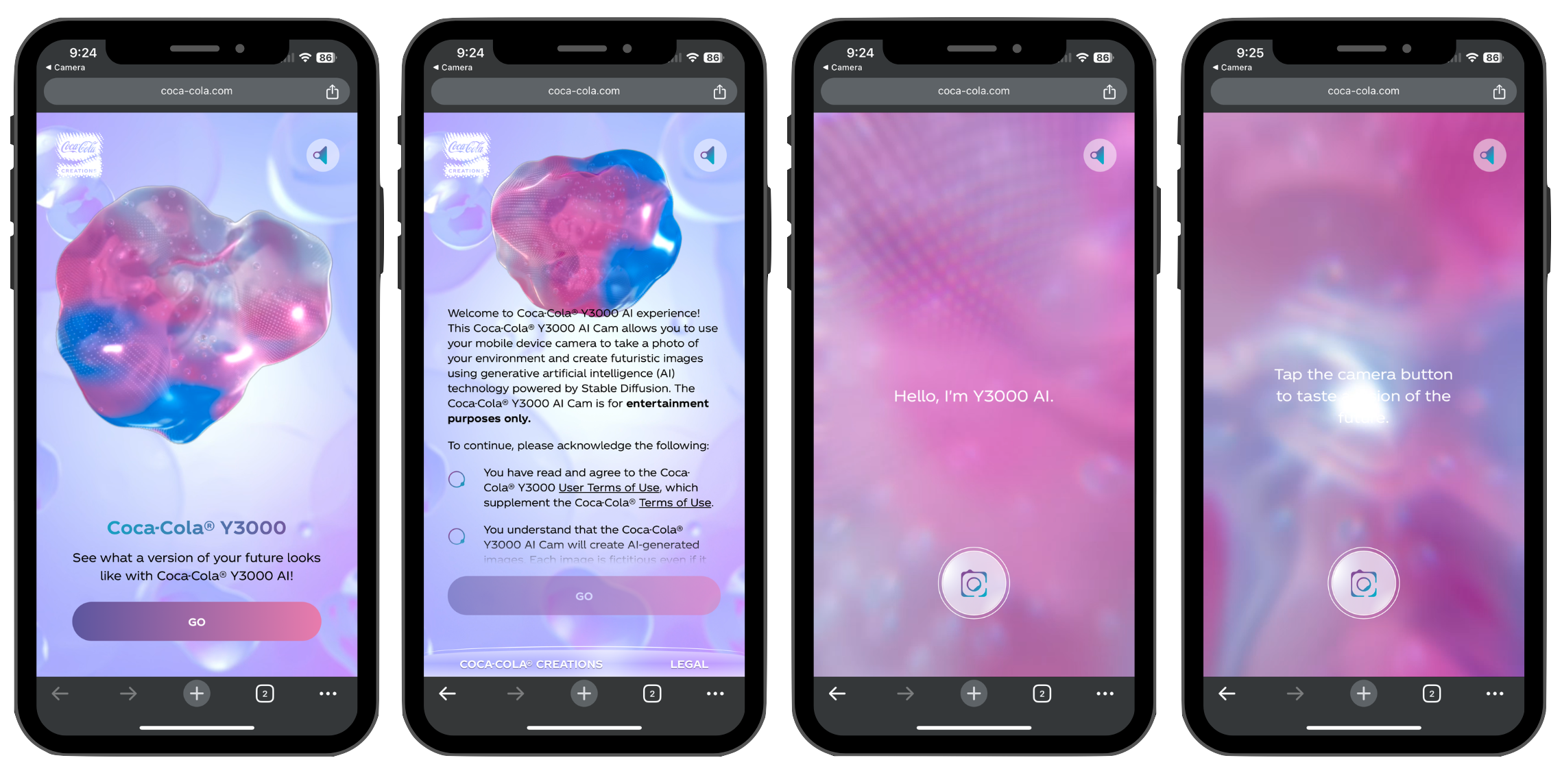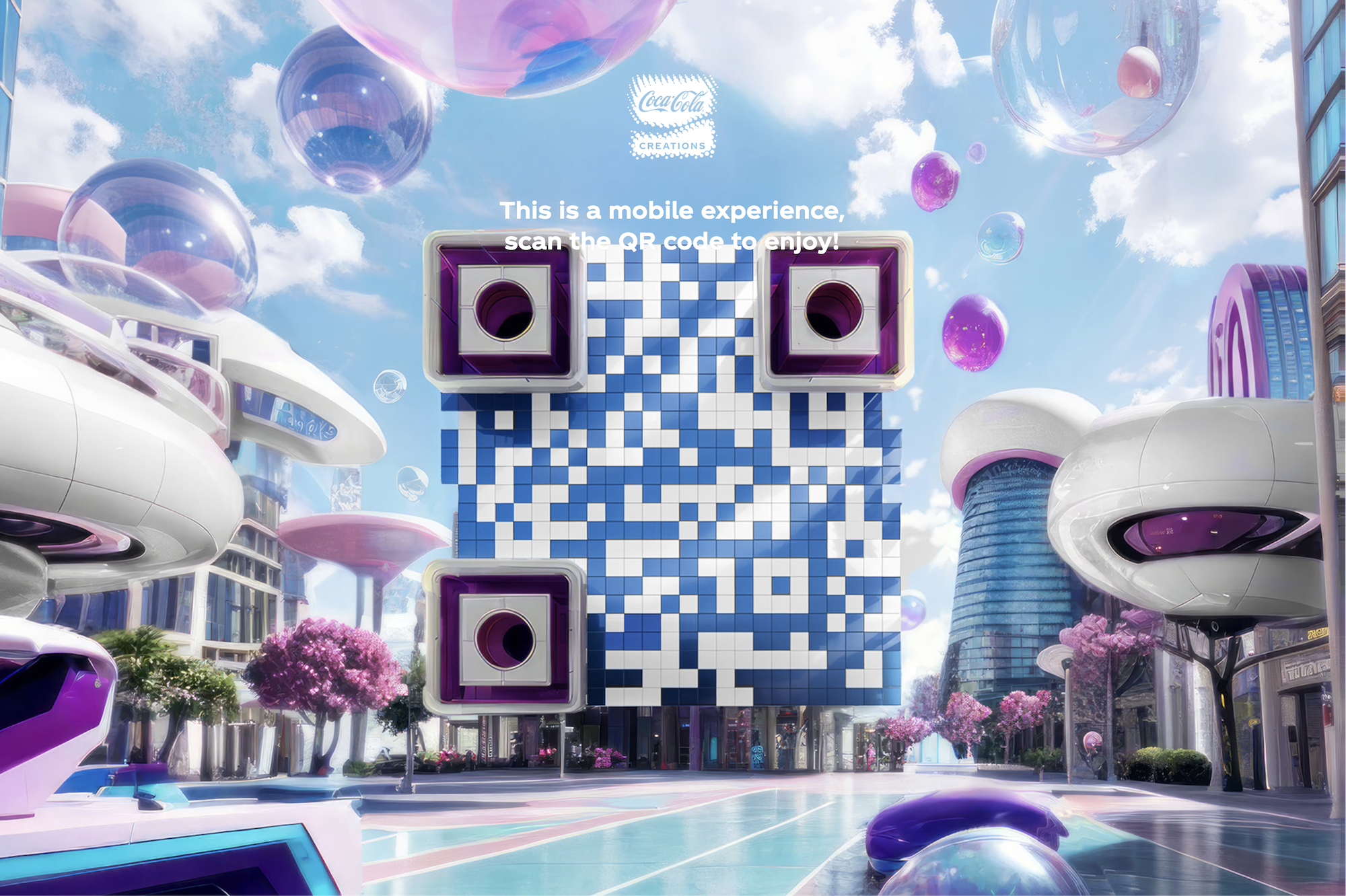Throughout 2023, Coca-Cola has adopted generative AI technology from OpenAI and Stable Diffusion in its advertising, launching several experiential marketing campaigns.
These campaigns demonstrate the transformative impact of AI on marketing, combining technology and creativity to reach audiences in new and engaging ways.
Keep reading to explore the six advertising and marketing campaigns Coca-Cola is creating in 2023 using generative AI technology.
1. An AI chatbot with local search results and lead capture
Coca-Cola’s AI chatbot, promoted via an Instagram feed ad, connects people to local restaurants in their city for the “perfect meal” via direct messaging.
Once you’ve found the right restaurant, you can head directly to OpenTable to learn more or make a reservation.
Local search results offered by Coca-Cola’s AI chatbot in Instagram direct messages are likely powered by Binggiven that:
- Coca-Cola uses OpenAI technology for some of its generative AI experiments.
- Microsoft presented Open table in Bing AI chat to connect users to nearby restaurants.
- Microsoft worked with Meta to bring Bing search to Meta AI chatbots.
 Screenshot from Instagram, December 2023
Screenshot from Instagram, December 2023
A similar ad on Facebook leads to a direct message on Messenger.
Once the AI thinks you’ve booked, it generates a personalized invitation for you to send to someone.
But more importantly, it allows Coca-Cola to capture leads within the DM. The email address is taken from your Facebook profile to make the process even easier.
 Screenshot from Facebook/Messenger, December 2023
Screenshot from Facebook/Messenger, December 2023
2. An AI image generator using GPT-4 and DALL·E for lead generation
In February, Bain & Company announced an alliance with OpenAI to provide companies like Coca-Cola with advanced ways to use GPT-4 and DALL·E.
Using this unique AI technology, Coca-Cola created the Real Magic platform, which allows users to generate original works of art using resources from Coca-Cola’s archives.
For the holidays, visitors can create AI-generated Christmas cards for family and friends.
To use the AI Map Generator, users must create a free account or log in using their Google, Facebook, Apple, or email address.
 Screenshot of Google/Coca-Cola, December 2023
Screenshot of Google/Coca-Cola, December 2023
Coca-Cola promoted its holiday AI card generator using Google Ads looking. You can see an example ad in a mobile search above and an example ad in a desktop browser search below.
THE 20 locations nearby are convenience stores and other businesses that typically sell Coca-Cola products.
 Screenshot from Google, December 2023
Screenshot from Google, December 2023
Coca-Cola also created an advertising campaign on Facebook and Instagram to introduce the Real Magic holiday app to social media audiences.
 Screenshot of Facebook Ads Library, December 2023
Screenshot of Facebook Ads Library, December 2023
It is worth mentioning that Coca-Cola offers a separated Terms of Service for AI and specifies that users must be 18 years or older to use the AI Map Generator. OpenAI only requires users to be 13 years old in its Terms of use.
3. A competition for user-generated content
Earlier this year, after announcing its partnership with OpenAI, Coca-Cola invited creators to participate in the Create Real Magic competition to generate original artwork with Coca-Cola brand assets GPT-4 and DALL· E.
Artists from certain countries could submit their creations for a chance to be featured on Coca-Cola’s digital billboards in New York’s Times Square and London’s Piccadilly Circus.
THE campaign demonstrated how a brand can inspire fans with minimal graphic design to create user-generated content (UGC). This also allowed Coca-Cola to refine the AI experience before launching the greeting card generator.
 Coca-Cola screenshot, December 2023
Coca-Cola screenshot, December 2023
Coca-Cola brands like Topo Chico are sharing AI-generated images on social media, highlighting that AI has significantly increased the volume of fan-created artwork.
 Screenshot from Instagram, December 2023
Screenshot from Instagram, December 2023
4. Video Marketing Showcasing Reimagined Art
Coca-Cola continued to promote Real Magic in Masterpiecea video presenting art reinvented over the years.
AI-generated art featuring Coca-Cola brand assets is also available as collectible digital assets.
ᴏɴᴄʜᴀɪɴ 🟡 ꜱᴜᴍᴍᴇʀ@Coca-Cola launches its Global Masterpiece campaign with iconic works from leading artists.
New now: https://t.co/xTWyI3O7IW pic.twitter.com/9wxFgt8qOh
– Coinbase 🛡️📞 (@coinbase) August 13, 2023
5. An outdoor advertising experience
Coca-Cola Creations wrapped up another year of limited-edition releases with a week-long OOH advertising experience called “Destination Y3000” in Las Vegas.
The Sphere takeover highlighted Coca-Cola’s new Y3000 flavor, the first to be co-created by humans and AI. Coca-Cola’s Selman Careaga shared his perspective on the process in a interview.
“The intention was to use AI and HI to understand how people think about the future: emotions, color, flavors, taste. We used that information, then we worked with our R&D team and they came up with a formula for Y3000.
THE experience featured dynamic projections, showcasing futuristic cityscapes and a world imagined by generative AI on The Sphere’s exosphere.
If you’re curious about how much an OOH experience costs at The Sphere, pricing was reportedly disclosed earlier this year:
Advertising rates for the $2.3 billion MSG Sphere have been disclosed.
• $450,000 for the day
• $650,000 for the weekThese awards include collaborating with MSG’s 300+ designers on creative and they estimate 4.7 million daily impressions (300,000 in person and 4.4 million on social).
Mad. pic.twitter.com/mNRyyS4OYK
– Joe Pompliano (@JoePompliano) October 2, 2023
Google supports using machine learning for creative content
The Sphere recently featured the work of internationally renowned media artist Refik Anadol, who harnessed the power of AI to create “Machine Hallucinations: The Sphere.”
Dear friends, I am deeply honored to participate in the opening of The Sphere as the first artist in residence with legends U2 and Darren Aronofsky! I look forward to sharing more experiences on The Sphere. pic.twitter.com/sASp5VZjcM
– Refik Anadol (@refikanadol) October 2, 2023
Since its Google AMI residency in 2016, Anadol has transformed vast datasets of space, nature, and urban areas into dynamic visualizations, revealing hidden aspects of reality through generative AI algorithms, including DCGAN, PGAN and StyleGAN.
Google Artists + Artificial Intelligence (AMI) program is an initiative aimed at nurturing a community of creative professionals and researchers working with machine learning.
6. An augmented reality experience with stable streaming
In addition to the OOH advertising experience in Las Vegas, Coca-Cola leveraged experiential product marketing by creating an augmented reality (AR) experience for Y3000 using Stable broadcast.
The experience transports any setting you photograph into “the future” imagined by generative AI.
 Coca-Cola screenshot, December 2023
Coca-Cola screenshot, December 2023
It is available only for smartphone users and offers a QR code to visitors on a desktop browser.
 Coca-Cola screenshot, December 2023
Coca-Cola screenshot, December 2023
QR code was labeled as ‘probable’ created by AI according to AI image detector which attempts to identify images created with DALL·E, Stable Diffusion and other popular AI image generators.
 Screenshot of AI or Not, December 2023
Screenshot of AI or Not, December 2023
Conclusion
Throughout 2023, Coca-Cola’s strategic adoption of generative AI technologies from OpenAI and Stable Diffusion marked a significant shift in its advertising and marketing approaches.
From interactive AI chatbots and user-generated content competitions to immersive augmented reality experiences and innovative OOH advertising, these initiatives demonstrated Coca-Cola’s commitment to combining cutting-edge technology and creative marketing to engage audiences in a new and dynamic way.
It also gives inspiration to marketers and advertisers for future use cases of generative AI in brand marketing.
Featured image: Luciano Mortula – LGM/Shutterstock


